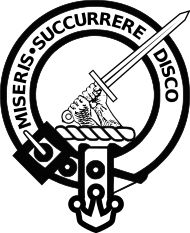Clan MacMillan
| Clan MacMillan | |||
|---|---|---|---|
| MacGhilleMhaolain | |||
 |
|||
| Motto | Miseris succerere disco (I learn to succour the unfortunate). | ||
| Profile | |||
| Plant badge | Holly | ||
| Chief | |||
 |
|||
| George Gordon MacMillan of MacMillan & Knap | |||
| Master of Arts (Scotland) & Deputy Lieutenant. | |||
| Seat | Finlaystone House | ||
| Historic seat | Castle Sween | ||
|
|||
|
|||
Clan MacMillan is a Highland Scottish clan. The clan was originally located in the Lochaber area of the Scottish Highlands during the twelfth century. The clan supported Robert the Bruce during the Wars of Scottish Independence, but later supported the Lord of the Isles in opposition to the Scottish Crown. During the Jacobite rising of 1745 the clan was divided with some supporting the Jacobites and others not taking part in the rebellion.
The chiefs of Clan MacMillan descended from an ancient royal house as well as from the orders of the Celtic church. An Irish prince, Saint Columba, in the sixth century established his church on Iona. This became the cradle of Christianity in Gaelic Scotland. Priests were permitted to marry by the Columban church although it faced increased pressure after the arrival of Queen Margaret of Scotland. Under Margaret more European practices were introduced.Alexander I of Scotland tried to integrate the two traditions by appointing Cormac, who was a Columban, as Bishop of Dunkeld. One of Cormac's sons was Gillie Chriosd who was the ancestor of the MacMillans.
Celtic priests had a distinctive tonsure: They shaved the front of their heads unlike the Romans who shaved a ring around the crown. The Celtic tonsure was described as that of St. John, which is rendered in Scottish Gaelic as Mhaoil-Iain. MacMillan is therefore son of one who bore the tonsure of St John. However the Lochaber branch of Clan MacMillan preferred an alternative form: MacGillemhaoil which means son of the tonsured servant.
...
Wikipedia
